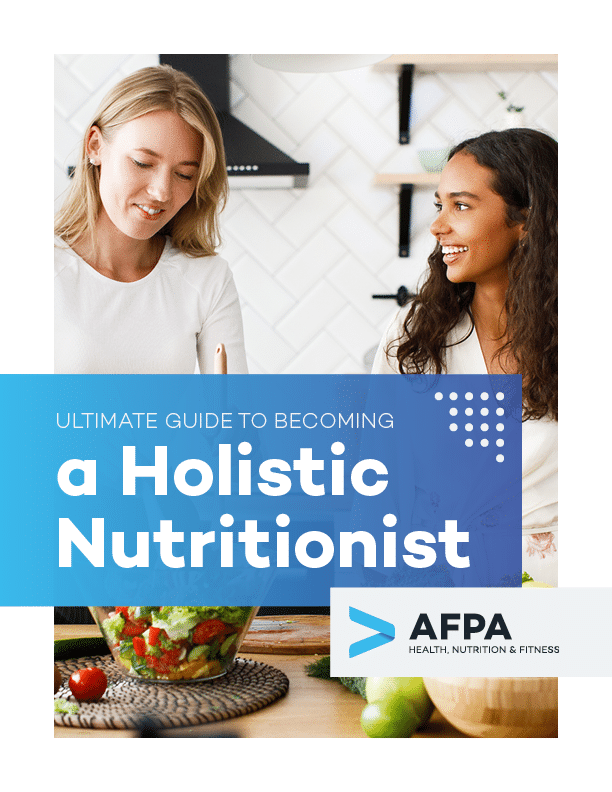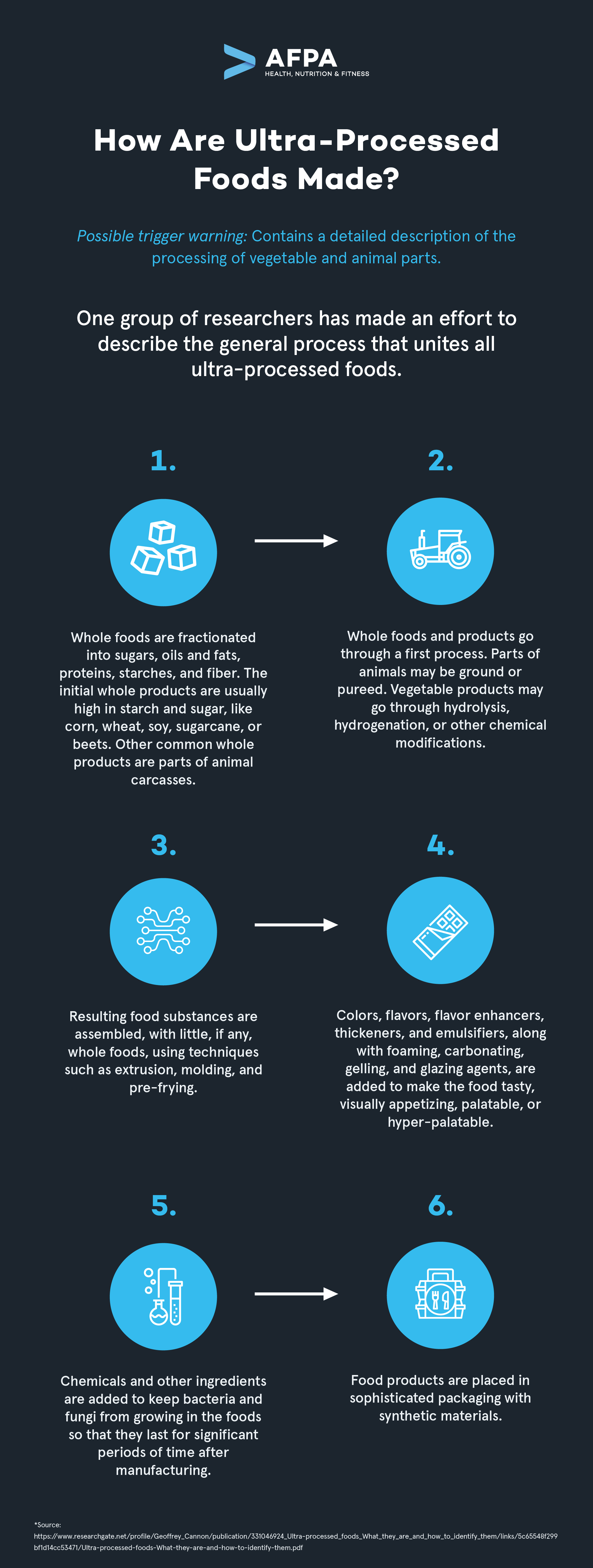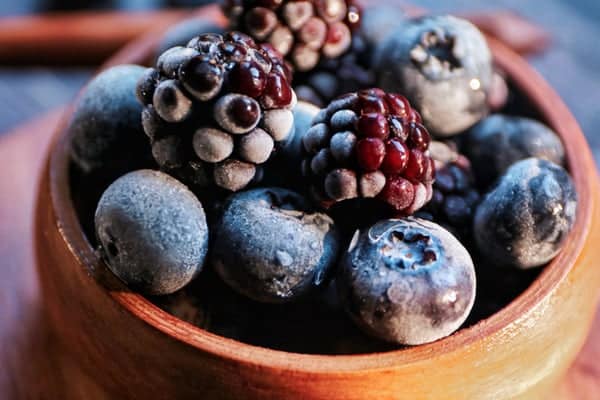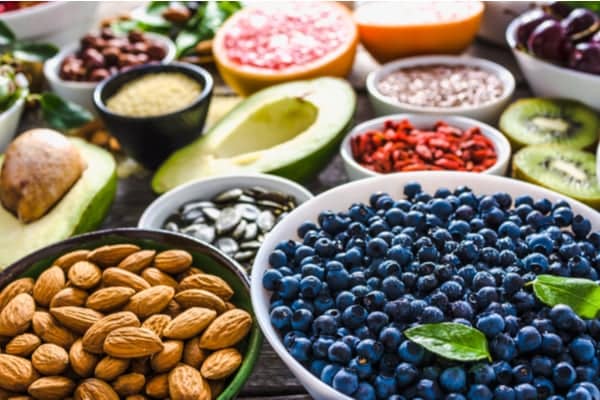Health and nutrition coaches commonly encounter people with many misconceptions about what it means to eat healthily.
You might have heard people say:
“I don’t want to go on a diet just to eat boiled chicken and vegetables.”
“If I want to eat clean, I’m going to have to get used to bland food.”
“I know I don’t make the best food choices, but I just love food. I don’t want to give up all that good stuff.”
A combination of poorly focused health strategies, outdated research, and the popularity of fad diets over several decades has led many people to believe that for a food to be truly healthy, you have to strip it of flavor and enjoyment.
Nutrition and health coaches know that is not the case at all. They know that eating a balanced diet means you can enjoy delicious foods that meet your nutrient needs.
What information can you provide to your clients to help them gain a more complete understanding of which foods promote health? What tools can you give them to help make their meal plans enjoyable?
In this article, we’ve deconstructed the term “Junk Food,” and we offer you concrete ideas on how you can make the foods on your clients’ meal plans delicious and enjoyable.
What Is “Junk Food”?
Have you ever asked yourself what actually defines something edible as “junk food”? If you ask those around you, you’ll find that your partner’s definition is probably very different from your mom’s definition of the term.
Why is there so much variety in understanding about what makes food healthy and unhealthy? There are two main reasons for this:
- There are many research-led views on how different foods impact the body. For example, while outdated research villainized dietary cholesterol, current research shows that cholesterol in food has little impact on blood cholesterol. This is why one person might see eggs as unhealthy, while others see eggs as a perfectly healthy part of the diet.
- The term “junk food” isn’t a scientific term. It’s a term that we use in our daily jargon when referring to foods that we think aren’t good for our health. In other words, junk food doesn’t mean just one thing.
As you read this, you might be wondering why this is important.
Well, when you talk to your clients, what they mean when they use the term “junk food” might be different from what you describe as junk food.
Take a moment to ask yourself: “What qualities do ‘junk foods’ have?”
You might be thinking that junk food is high in saturated fat or high in refined carbohydrates. As a health and nutrition coach, you know that different types of nutrients act differently in the body, so you know to be specific regarding the type of fat and carbohydrate you are referring to.
Health coaches are also likely aware that “healthy foods,” on the other hand, are nutrient dense, meaning they deliver plenty of vitamins, minerals, and other components our bodies need in each serving of food, and that they are whole and unadulterated.
You might also have ideas about how foods categorized as junk foods are cooked—are they fried, breaded, or cooked in butter? Your personal definition of junk food may also refer to foods that contain lots of additives.
Your client might have a completely different definition of junk food. They might define it as everything white or beige in color or that contains any sort of fat.
One way you can make sure you are on the same page as your client when it comes to talking about junk food is to describe its characteristics and refer to it by its scientific term.

Get Your Free Guide to Becoming a Holistic Nutritionist
Learn about the important role of holistic nutritionists, what it takes to be successful as one, and how to build a lucrative, impactful career in nutrition.
Is There a Scientific Term for Junk Food?
As we describe above, the term “junk food” does not have a clear definition, and it can leave room for plenty of misconceptions.
Ultimately, regardless of the qualities that different people might use to describe junk food, everyone wants to communicate the same thing—junk food is used to refer to an edible substance that, when it makes up a significant portion of your overall diet, can lead to diminished health.
So, is there an alternative all-encompassing term that takes into account the most up-to-date research?
Yes. The scientific term for junk food is Ultra-Processed Foods (UPF).
The term “ultra-processed foods” encompasses foods that have the qualities that lead to diminished health when they make up a large part of the diet.
Researchers define UPF as follows:
“Ultra-processed foods are formulations of ingredients, mostly of exclusive industrial use, that result from a series of industrial processes (hence ‘ultra-processed’).”
In other words, processed foods contain ingredients that are usually only found on labels. Those ingredients usually come from a series of food processes. They are usually made with sugar, fats and oils, and salt. Additives make the foods shelf-stable for long periods of time.
How Are Ultra-Processed Foods Made?
Possible trigger warning: Contains a detailed description of the processing of vegetable and animal parts.
One group of researchers has made an effort to describe the general process that unites all ultra-processed foods.
- Whole foods are fractionated into sugars, oils and fats, proteins, starches, and fiber. The initial whole products are usually high in starch and sugar, like corn, wheat, soy, sugarcane, or beets. Other common whole products are parts of animal carcasses.
- Whole foods and products go through a first process. Parts of animals may be ground or pureed. Vegetable products may go through hydrolysis, hydrogenation, or other chemical modifications.
- Resulting food substances are assembled, with little, if any, whole foods, using techniques such as extrusion, molding, and pre-frying.
- Colors, flavors, flavor enhancers, thickeners, and emulsifiers, along with foaming, carbonating, gelling, and glazing agents, are added to make the food tasty, visually appetizing, palatable, or hyper-palatable.
- Chemicals and other ingredients are added to keep bacteria and fungi from growing in the foods so that they last for significant periods of time after manufacturing.
- Food products are placed in sophisticated packaging with synthetic materials.

Why Should We Limit the Consumption of Ultra-Processed Foods?
Before we go into what the research says regarding the effects of the consumption of ultra-processed foods, as nutrition and health coaches, it is important to have plenty of perspective regarding why people make food choices.
Eating Behaviors vs. Eating Food
Food access, economic limitations, and the factors involved in the social experience of eating are all important elements to keep in mind when it comes to working with clients to modify eating behaviors.
Ultimately, it is important not to villainize any food or eating habits when working with clients. Foods are not inherently “good” or “bad.” While consuming large quantities of certain foods or eating certain types of foods regularly does, without a doubt, influence our health status, this is an issue of eating behaviors, not a food problem.
Foods are just foods, regardless of how they are made or produced. Eating a bag of chips or a cream-filled doughnut every once in a while will generally not cause harm to people unless they are living with a metabolic condition like diabetes.
Additionally, as coaches, you must be mindful that eating behaviors are very complex. People who have eating patterns high in ultra-processed foods are not doing so to cause harm to themselves, so it is important to be sensitive to why people make food choices.
Social factors like inequalities and agency, psychological factors like trauma, and environmental factors like food deserts and food insecurity all affect how people make decisions regarding what to eat. These issues disproportionately affect BIPOC and Hispanic communities more than other communities. For example, Black communities are much more likely to be affected by food insecurity than white people.
As coaches, it is important to be mindful of the complexities of nutrition and eating when working with clients. We need to listen, show empathy, ask questions, and acknowledge how life experiences impact lifestyle choices in order to find realistic ways to help them make choices that will improve their physical and mental health in the long term.
Often it is individuals’ relationship with food that must be mended in order for people to eat balanced diets and lead health-promoting lifestyles.
There are many strategies to help clients do this that AFPA expands upon in other blog articles, such as this one on Intuitive Eating and this one on Mindful Eating.
The Health Effects of a Diet Rich in Ultra-Processed Foods
From a purely dietary perspective, there are several research-backed reasons why we should limit, but not necessarily eliminate, the consumption of ultra-processed foods.
- The final processes that UPF undergo make the foods palatable and hyper-palatable. Hyper-palatable foods may trigger addictive or compulsive eating behaviors.
- Ultra-processed foods are very energy-dense high in added sugar, saturated fat, and sodium, and lower in fiber.
- A diet high in ultra-processed foods is associated with obesity.
- Diets high in ultra-processed foods exceed the upper limits for fat, saturated fat, free sugars, and sodium, and they do not meet fiber needs.
- Diets high in ultra-processed foods are more likely to be deficient in protein, fiber, vitamins A, C, D, B6 and B12, niacin, thiamine, and riboflavin, as well as zinc, iron, magnesium, calcium, phosphorus, and potassium.
Public health specialists have found that decreasing the consumption of ultra-processed foods and increasing the consumption of meals made with processed culinary ingredients (like dried herbs and ground spices) and minimally processed foods could significantly improve the quality of the diet.
Coach Toolbox: Tips for Making ‘Healthy’ Foods Delicious
“Healthy” foods, as opposed to “junk foods” (ultra-processed foods), are those that are close to how we would find them in nature, have undergone few industrial processes, and contain few to no additives.
It is easy to recommend eating “whole foods” or “vegetables” instead of cracking open a box of cream-filled cookies.
If we are being honest with ourselves, eating plain carrot sticks won’t hit the spot if we are craving Oreo cookies.
So, how can we make realistic recommendations for how to cut out the ultra-processed foods and eat more nutrient-rich foods?
Since most peoples’ snacking behaviors are led by cravings, we’ve divided the recommendations below into different “craving categories.”
Note: The different ingredients selected are based on definitions of minimally processed foods and culinary ingredients, but you may have to modify some of these suggestions based on your client’s or patient’s specific dietary needs.
Healthy Snacks for Sweet Cravings
Ready-to-Eat Snacks
You can grab any of these in a pinch, or make these more interesting by combining them with the dips and spices we mention below.
- Sweet potato
- Banana
- Dark chocolate
- Peanut butter on whole-wheat toast
- Fruit smoothies (throw in some spinach or kale to get some veggies in)
- Dried fruit (mango, figs, dates, banana, raisins)
- Dehydrated fruit
- Fruit slices (mandarin oranges, apples, pears)
- Berries, fresh or frozen
- Apple sauce (no sugar added)
Plan-Ahead Snacks
You’ll find tons of recipe ideas for these online.
- Energy balls (coconut, peanut butter, red velvet…there are numerous recipes you can use)
- Lentil cocoa nib muffins
- No-sugar-added oatmeal raisin cookies
- Brown rice pudding
- Carrot cookie bites
- Smoothie bowls
- Chocolate chia pudding
- Blueberry muffins
- Almond date truffles
- Dark chocolate nut bark
- Banana ice cream (blended banana and cinnamon, frozen)
- Yogurt-covered raisins
- Raspberry hummus
Dips, Dressings, and Toppings
These options can make whole foods much more interesting and tasty. Some of these might be high in saturated fat (whipping cream) or sugar (honey and maple syrup) and should generally be used sparingly. However, a little goes a long way for these ingredients when they are added as a topping.
- Whipping cream
- Melted dark chocolate (the darker the chocolate, the less added sugar)
- Smoothies (make a thick smoothie and dip fruit in it)
- Natural nut butter
- Nuts and seeds (crushed almonds, walnuts, hemp, chia, and flaxseed)
- Dried fruit
- Honey drizzle
- Maple syrup drizzle
- Greek yogurt
- Cream cheese
Herbs and Spices
Herbs and spices can completely change how your clients view healthy food options. Not only do they make food more interesting, but they are also very high in phytonutrients like antioxidants.
- Pumpkin spice
- Cinnamon
- Nutmeg
- Allspice
- Ground cloves
- Vanilla extract
- Almond extract
- Anise
- Cardamom
- Ginger
- Mint
- Stevia extract
Examples of Sweet Craving Food Combinations
- Baked sweet potato sprinkled with cinnamon
- Bananas dipped in a berry smoothie dip
- Dark chocolate and nut trail mix
- Frozen fruit dipped in dark chocolate
- Edamame with dark chocolate peanut butter dipping sauce
- Grapes and mandarin with cottage cheese
- Pears, honey, and Greek yogurt
- Pita chips with raspberry hummus
Healthy Savory Snacks for Salty Cravings
Ready-to-Eat Snacks
- Veggie sticks and slices (carrots, cucumber, broccoli, cherry tomato, celery, radish)
- All-natural jerky (try vegan jerky if you are on a plant-based diet)
- Rotisserie chicken
- Hard-boiled eggs
- Nuts (walnuts, almonds, cashews, peanuts, soy nuts, and hazelnuts. Roasted or raw is fine, but try to avoid options high in sodium and artificial flavorings)
- Seeds (pumpkin seeds, sunflower seeds, and hemp seeds)
- Edamame
- Avocado on whole-wheat toast or pita
- Popcorn (lightly salted or unsalted)
- Whole-wheat, all-natural pretzels
- Whole-wheat tortilla chips, low in sodium (or no salt added)
- Seaweed
Plan-Ahead Snacks
You can easily find recipes for each of these on recipe websites.
- Kale chips with cheddar cheese
- Asparagus chips
- Guacamole (make spicy)
- Rice cake pizzas (made with all-natural tomato sauce, mozzarella or vegan cheese, and herbs and veggie toppings)
- Tomato chips
- Roasted chickpeas
- Vegan coleslaw (made with carrots, purple cabbage, and white cabbage)
- Grilled eggplant and cilantro dip
- Crunchy cheese crackers (100% cheese, can use vegan cheese, too!)
Dips, Dressings, and Toppings
- Shredded cheese
- Cream cheese
- Parmesan cheese
- Hummus
- Eggplant dip
- Spinach dip
- Mustard
- Veggie-based dips with olive oil
- Healthy oils (extra-virgin olive oil, avocado oil, sesame oil, pumpkin seed oil, coconut oil)
- Horseradish sauce
Herbs and Spices
This is only a short list for the hundreds of spices you can use to add interesting flavors to your savory snacks. Not only do herbs and spices make snacks interesting, but they are also packed with phytonutrients (plant nutrients) that have antioxidant, anti-inflammatory, and immune-strengthening properties.
- Chili flakes
- Oregano
- Rosemary
- Fresh basil
- Cilantro
- Black pepper
- Mustard
- Mustard seeds
- Chives
- Chicory
- Cayenne pepper
- Dill
- Cumin
- Curry
- Parsley
- Sesame
- Wasabi
Examples of Savory Craving Food Combinations
If you make the portions bigger, these can be made into lunches, too!
- Veggie sticks with hummus
- Whole-wheat crackers with cream cheese and onion powder
- Mozzarella, tomato, and guacamole toast
- Pita bread with vegan coleslaw
- Whole-wheat chips (low-sodium, all-natural), with veggie dips
- Baked cheese
- Stuffed bell peppers
- Mini sandwiches
- Wraps with homemade peanut sauce
Main Takeaways
Ultra-processed “junk” foods, while they are delicious, should generally be limited in the diet because they lack nutrient density, meaning they are poor sources of the nutrients that our bodies need most while being high in energy from refined carbohydrates and saturated fat.
When our clients decide to make the shift toward eating more whole, minimally processed foods, they may feel like they are missing out on flavors and textures. There is no reason for healthy food to be boring or bland. As health and nutrition coaches, we can offer some ideas for how to spice up their snack game to nurture their bodies while feeling satisfied.
Keep in mind that, just as there is no one-size-fits-all meal plan, some of the options we suggest above may not work for all people. Make sure to get to know your client’s or patient’s nutrient needs, and ask them if they have any health conditions so you can personalize sweet and savory snack lists for them.

Get Your Free Guide to Becoming a Holistic Nutritionist
Learn about the important role of holistic nutritionists, what it takes to be successful as one, and how to build a lucrative, impactful career in nutrition.



